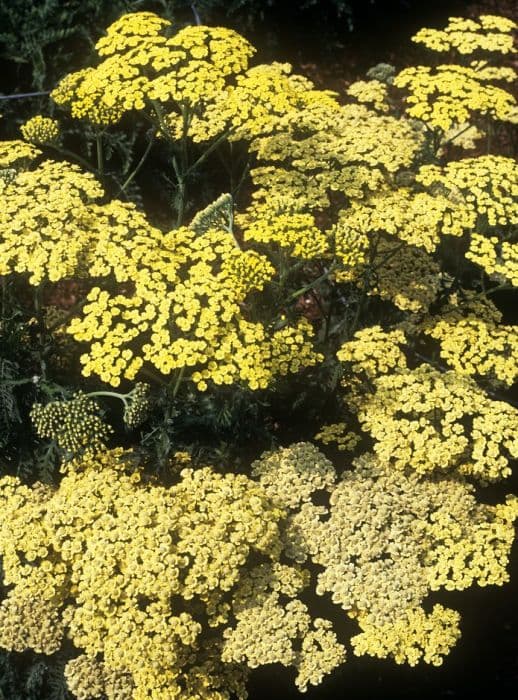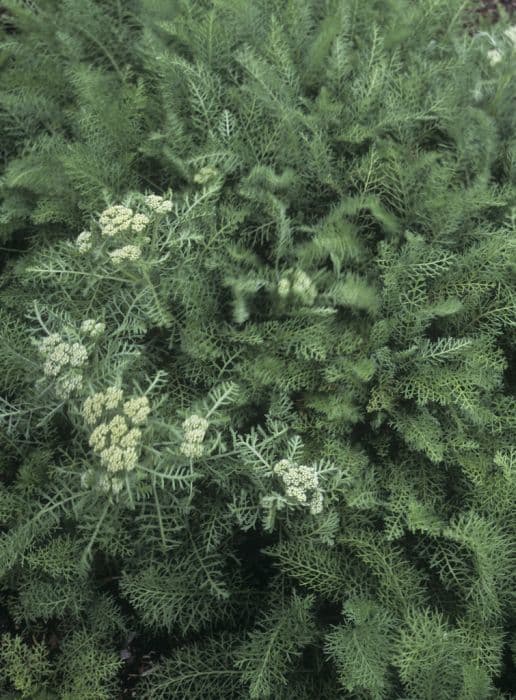Mexican Zinnia Zinnia haageana Jazzy Mixed (d)
![zinnia [Jazzy Mixed]](/_next/image?url=https%3A%2F%2Fplants-admin.emdemapps.com%2Fimages%2Fplants%2F%2Fimages%2F604b63ab35ea5.png&w=3840&q=75)
ABOUT
Zinnia haageana Jazzy Mixed, commonly known as Mexican Zinnia, is a vibrant and colorful flowering plant that features a spectacular display of daisy-like flowers. These blooms come in a diverse palette of colors, including shades of orange, pink, yellow, red, and cream. Some flowers may even showcase multiple hues, presenting a striking bi-color pattern with contrasting petal edges or centers. The petals are typically arranged in a single row around a central eye, although some blossoms can have multiple layers of petals, adding a sense of fullness and texture to the flower head. The center of the flowers is often a visible and distinctive button-like disc, which can be yellow, brown, or burgundy, providing an appealing contrast to the ray petals. The foliage of Mexican Zinnia consists of lance-shaped leaves that attach directly to the stems without any stalks. These leaves are a crisp, medium to dark green and have a slightly rough texture. The plant's overall growth habit is bushy and compact, with a well-branched structure that supports the profusion of blooms. As a popular choice for gardeners, Mexican Zinnia stands out for its ability to attract butterflies and pollinators, adding life and movement to any garden setting. It is also known for its long-lasting and durable flowers, which are excellent for cutting and using in floral arrangements, bringing the lively essence of summer into any home.
About this plant
 Names
NamesFamily
Asteraceae
Synonyms
Mexican Zinnia, Narrow-leaved Zinnia, Haage’s Zinnia
Common names
Zinnia haageana.
 Toxicity
ToxicityTo humans
Mexican Zinnia is not known to be toxic to humans. In general, Mexican Zinnias are considered safe and are not associated with toxicity when touched or ingested. There are no known toxic effects or symptoms of poisoning from ingesting this plant.
To pets
Mexican Zinnia is not known to be toxic to pets. It is generally considered non-toxic to cats, dogs, and other animals. There are no well-documented cases of poisoning from pets ingesting parts of this plant, and it is not listed as toxic to pets by major animal health organizations.
 Characteristics
CharacteristicsLife cycle
Annuals
Foliage type
Deciduous
Color of leaves
Green
Flower color
Mixed
Height
1 foot (30 cm)
Spread
1 foot (30 cm)
Plant type
Herb
Hardiness zones
9
Native area
Mexico
Benefits
 General Benefits
General Benefits- Attracts Pollinators: Zinnia flowers provide nectar and pollen for bees, butterflies, and hummingbirds, enhancing pollinator biodiversity in gardens and landscapes.
- Easy to Grow: They are known for their low maintenance and ease of cultivation, making them suitable for gardeners of all skill levels.
- Long Blooming Season: Zinnias bloom for an extended period from early summer to the first frost, offering vibrant colors in the garden for many months.
- Versatility in Landscaping: They can be used in borders, beds, containers, and as cut flowers, providing flexibility in garden design and use.
- Drought Tolerance: Once established, Zinnias are relatively drought-resistant, requiring minimal watering and suiting climates with less frequent rainfall.
- Color Variety: Zinnia haageana varieties offer a wide array of flower colors and patterns, allowing for personalized and diverse garden aesthetics.
- Fast Growth: Zinnias germinate and grow quickly, so they are ideal for filling in gaps in the garden or for succession planting.
- Improves Garden Soil: The root systems of Zinnias help to break up the soil and improve its structure over time.
- Easy to Harvest Seeds: Zinnias produce seeds that are easy to collect and save for planting in subsequent seasons, offering a cost-effective way to propagate plants.
 Medical Properties
Medical PropertiesThis plant is not used for medical purposes.
 Air-purifying Qualities
Air-purifying QualitiesThis plant is not specifically known for air purifying qualities.
 Other Uses
Other Uses- Craft projects – The colorful petals of Zinnia haageana can be pressed and used for making bookmarks, greeting cards, or other decorative paper crafts.
- Natural dye – The petals, which come in a variety of bold colors, can be used to make natural dyes for fabrics or art projects.
- Photography – Zinnias are often used as an attractive subject for photography due to their vivid colors and rich textures.
- Edible decoration – The flowers are edible and can be used to decorate cakes, salads, or other dishes, adding a splash of color.
- Educational tool – Teachers can use zinnias in lessons about plant life cycles, botany, and the importance of pollinators in ecosystems.
- Gardening skill development – Growing Zinnia haageana from seeds can help novice gardeners learn basic gardening skills due to their easy-to-grow nature.
- Floral art – Zinnias can be used in floral art and arrangements for competitions or simply as a hobby, promoting creativity.
- Companion planting – Zinnias can be planted among vegetables to attract beneficial insects that help with pest control.
- Symbolism – In different cultures, zinnias can symbolize different concepts, such as remembrance or thoughts of absent friends, offering a meaningful gesture when given as a gift.
- Mood enhancement – The bright colors of Zinnia haageana can have a positive effect on mood and ambiance when placed in living areas or workspaces.
Interesting Facts
 Feng Shui
Feng ShuiZinnias are not commonly referenced in Feng Shui practice.
 Zodiac Sign Compitability
Zodiac Sign CompitabilityZinnias are not used in astrology practice.
 Plant Symbolism
Plant Symbolism- Memory: Zinnia haageana, commonly known as Mexican Zinnia, is often associated with the remembrance of absent friends. They are given or planted in memory of those who are missed.
- Endurance: Mexican Zinnia symbolizes endurance as these flowers can withstand hot temperatures and bloom under harsh conditions, representing someone's ability to persist through challenges.
- Daily remembrance: As zinnias bloom each day, they are a symbol of daily remembrance, signifying the importance of holding onto fond memories each day.
- Friendship: The Mexican Zinnia is also a symbol of lasting friendship, suggesting the enduring ties between close friends that last despite time or distance.
- Affection: Giving zinnias can be a way to express affection or goodwill towards someone, symbolizing a thoughtful gesture of kindness.
 Water
WaterMexican Zinnia should be watered deeply, allowing the top inch of the soil to dry out before watering again. In hotter seasons, this could mean watering about once a week, potentially providing about one gallon of water per plant, depending on size and environmental conditions. During cooler months or periods of rain, decrease watering frequency. Ensure that the plant is not left in standing water as this can promote root rot. Good drainage is essential for the health of these plants, so water thoroughly but infrequently.
 Light
LightMexican Zinnia thrives in full sun, which means it requires at least 6 hours of direct sunlight per day. The best spot for this plant is an area that receives unfiltered sunlight throughout the day. Avoid shady locations, as insufficient light can lead to fewer blooms and a leggier plant.
 Temperature
TemperatureMexican Zinnia prefers warm conditions and can tolerate summer heat well. They grow best in temperatures between 60°F and 85°F. They can survive minimum temperatures down to around 50°F, but frost can damage the plant. Do not plant outdoors until all danger of frost has passed in spring.
 Pruning
PruningMexican Zinnia benefits from occasional deadheading to remove faded flowers, which encourages more blooms and extends the flowering season. Pruning is best done in the morning after dew has evaporated. Perform deadheading every few weeks or as needed to maintain appearance and promote continuous blooming throughout the season.
 Cleaning
CleaningAs needed
 Soil
SoilMexican Zinnia (Zinnia haageana 'Jazzy Mixed') thrives in well-draining soil enriched with organic matter. A mix of loamy soil, compost, and a small amount of coarse sand or perlite would be ideal. The soil pH should be slightly acidic to neutral (pH 5.5 to 7.5). Regular fertilization can encourage more robust growth and bloom production.
 Repotting
RepottingMexican Zinnias typically do not require frequent repotting as they are annual plants. They should be planted in the garden or outdoor containers where they can grow for the season without the need for repotting.
 Humidity & Misting
Humidity & MistingMexican Zinnias are adaptable to a range of humidity levels but prefer moderate conditions. They perform best when not subjected to high humidity which can encourage fungal diseases; dry to average air moisture is ideal.
 Suitable locations
Suitable locationsIndoor
Ensure full sun, well-draining soil, and ample space.
Outdoor
Plant in full sun, use well-drained soil, and space properly.
Hardiness zone
2-11 USDA
 Life cycle
Life cycleZinnia 'Jazzy Mixed', starts its life as a seed planted in well-drained soil after the last frost, needing full sun exposure to thrive. Germination occurs within 5-7 days at 75-80°F (24-27°C), leading to the establishment of seedlings, which then develop true leaves. As the plant grows, it develops a sturdy stem and a bushy form with vibrant flowers emerging in a variety of colors, blooming prolifically throughout the summer. The flowering stage can last several months, attracting pollinators like butterflies and bees. After blooming, if flowers are left on the plant, they produce dry seed heads that can be harvested for future planting. At the end of the growing season, Zinnia 'Jazzy Mixed' completes its annual cycle, dying with the first frost, with seeds needing to be collected or re-sown the following year to continue the cycle.
 Propogation
PropogationPropogation time
Spring to early summer
Zinnia haageana, commonly known as Mexican Zinnia, is typically propagated by seed. The most popular method of propagation for Mexican Zinnia is through direct seeding into the garden soil. This is generally done in the spring after the threat of frost has passed and the soil has warmed up, ensuring the seeds have the best environment for germination. Ideally, the outdoor temperature should be consistently at or above 50 degrees Fahrenheit (10 degrees Celsius). To propagate, scatter the seeds on well-drained, fertile soil, and lightly cover them with about a quarter inch (about 6 millimeters) of soil. Water gently and keep the soil moist until germination, which usually occurs within 7 to 10 days. Once seedlings have emerged and grown sufficiently, they may be thinned to allow proper spacing for optimal growth.









